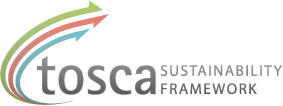LCA to support sourcing and upstream supply chain improvements
By Ann-Christin Pålsson & Ellen Riise
 As LCA can help with identifying the environmental impact from the production of materials used in the product, the results from LCA can provide important input to sourcing activities and decisions. LCA can be used:
As LCA can help with identifying the environmental impact from the production of materials used in the product, the results from LCA can provide important input to sourcing activities and decisions. LCA can be used:
- as input to prioritisation of environmental improvement activities for suppliers and supply chain
- when defining environmental expectations and requirements on suppliers and upstream supply chain
- for measurement and follow-up of the environmental performance of suppliers and materials
- in supplier selection and evaluation
The starting point for determining how to work with LCA in sourcing can be an LCA study to identify which materials that have a major impact on the overall result for the products. This information can be used as basis for defining prioritisation for how to work with suppliers and the upstream supply chain, and to focus resources and activities on the parts of the supply chain where the the major improvement potentials are. Different way of working with the suppliers may be needed for different types of materials and suppliers.
Also, the information can be used as basis to define environmental expectations on suppliers, for example specific environmental aspects that should be improved for specific materials.
Depending on strategy for the work in sourcing, life cycle assessment and life cycle thinking can also be used as basis for continuous measurement and follow-up of the environmental performance of suppliers and purchased materials. When establishing measurement and follow-up based on LCA, the following should be considered:
- Define what to measure, as well as how to measure. What data need to be collected from the suppliers, what data may need to be collected from other sources, how should the data be collected, etc? Also, what share of the supplier base should be covered in the measurement, e.g. all suppliers, defined percentage etc.?
- Communicate expectations to the suppliers. Based on the definition of what to measure; communicate to the suppliers what data is needed from them, and how they should collect the information, etc.
- Define and implement data collection and assessment procedures. What roles and responsibilities need to be established for supplier data collection, how should the data collected; via questionnaires, surveys, dialogues etc., how should the information be reviewed and handled, how should results be modeled and compiled, with what frequency should data be updated, how can confidentiality issues be handled etc.?
- How to provide feedback to suppliers on results. In what way should results from the assessments be communicated to the supplier to drive improvement activities?
Having established measurement and follow-up, the information can be used as basis in supplier selection and evaluation, to integrate environmental aspects as part of the daily sourcing work.
In general, the work with introducing LCA to support sourcing will be cross-functional and interdisciplinary, where personnel responsible for sourcing works together with environmental experts. As the sourcing department usually is responsible for the business relationship with the suppliers, it is generally recommended that they convey the environmental expectations to make clear that it is part of the business agreements.
See further information regarding Upstream supply chain in the “Supply chain activities” part on this website.

